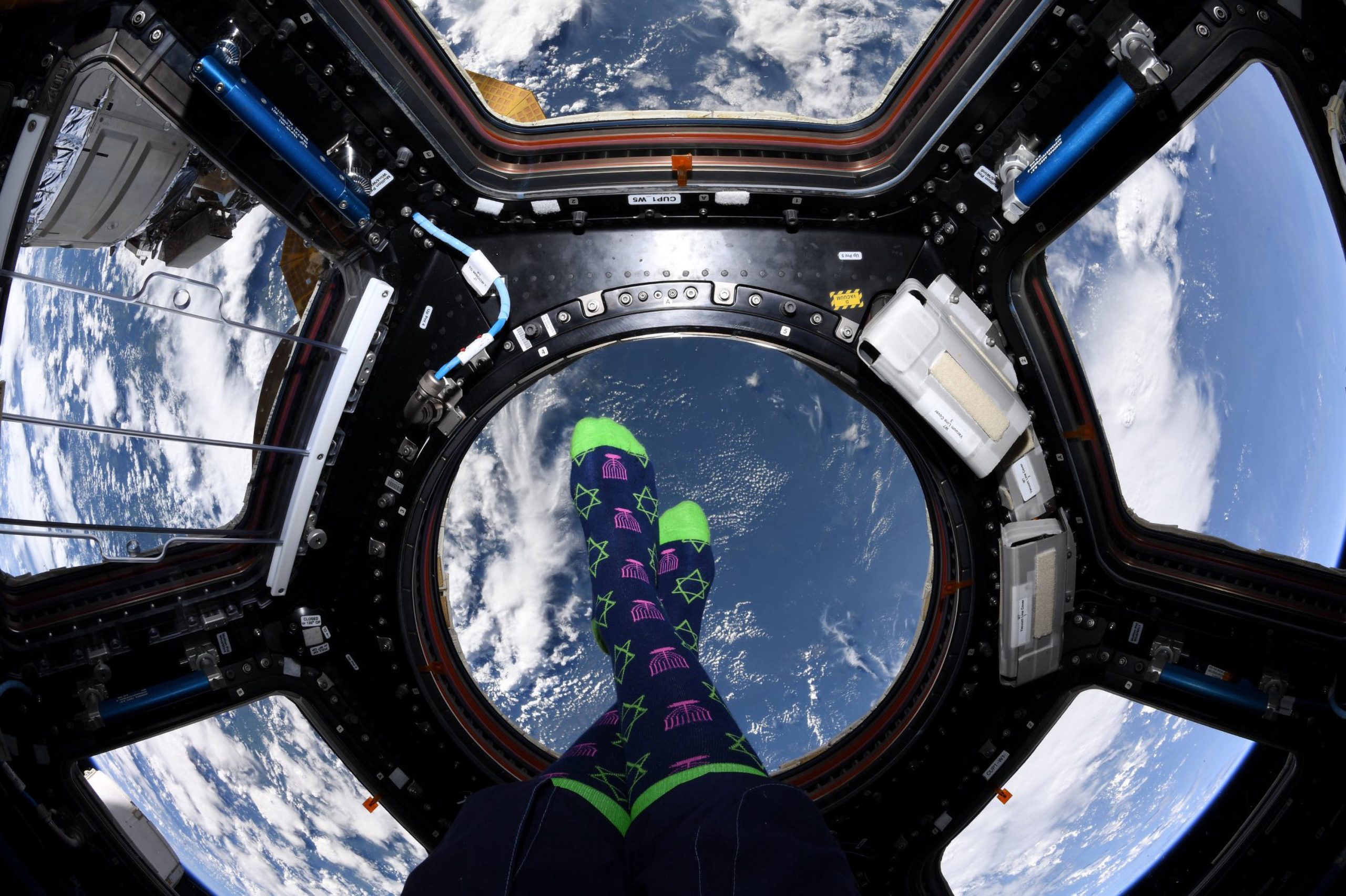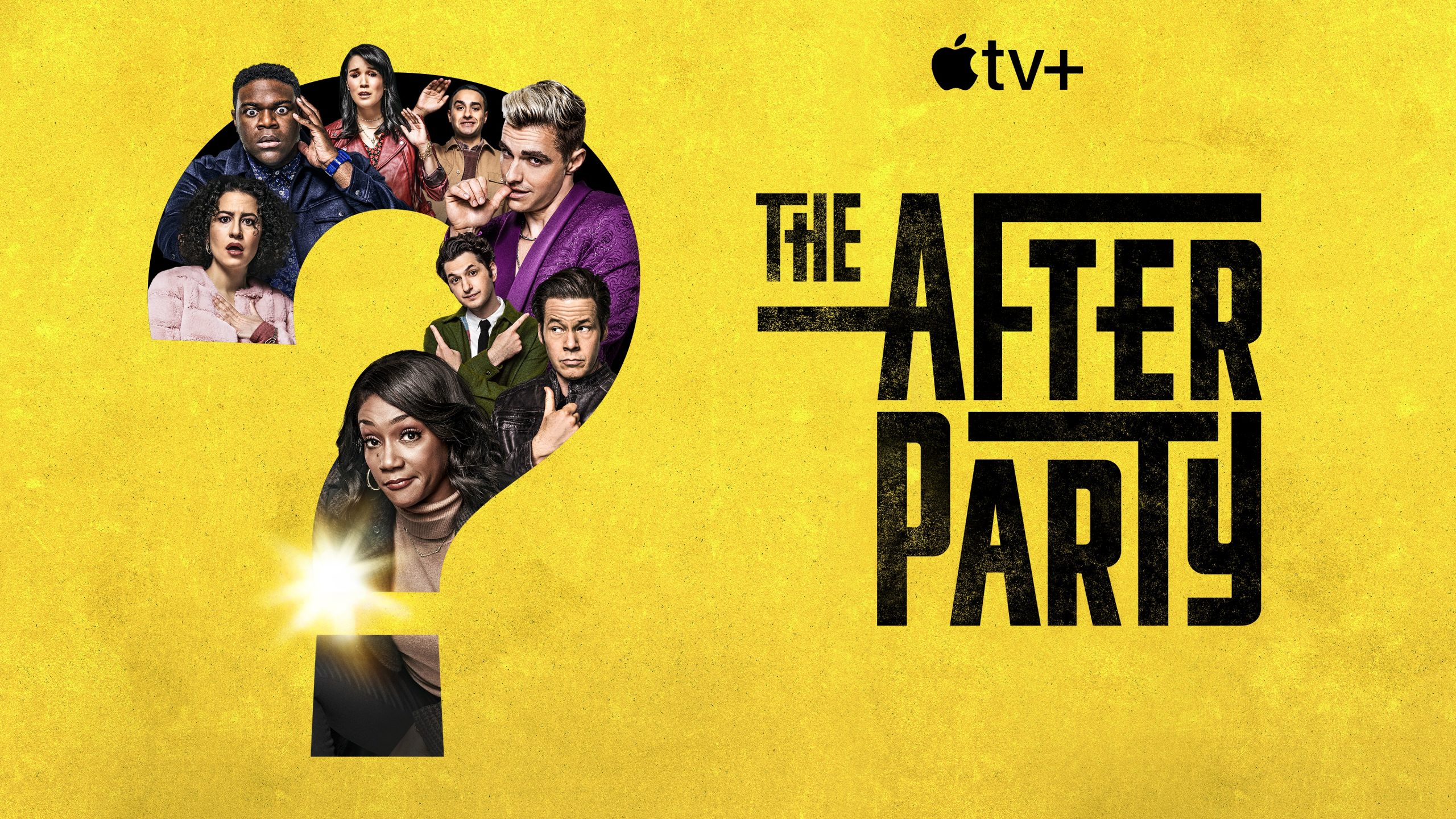
Two-time Oscar-winning sound mixer Michael Semanick spoke about his work on The Afterparty, Chip ‘n Dale: Rescue Rangers, and more.
My almost half-hour conversation with Semanick took place on Friday morning. In addition to the series and movie that are up for Emmy consideration, we also discussed the 15th anniversary of Ratatouille taking place on June 29. There are other films that came up during the conversation. It’s bound to happen when one as deep a filmography that the sound mixer has. He has two wins for Best Sound Mixing: The Lord of the Rings: The Return of the King (2003) and King Kong (2005). In addition to this, Semanick has an additional nine Oscar nominations for the following films:
- The Lord of the Rings: The Fellowship of the Ring (2001)
- The Lord of the Rings: The Two Towers (2002)
- Ratatouille (2007)
- WALL-E (2008)
- The Curious Case of Benjamin Button (2008)
- The Social Network (2010)
- The Girl with the Dragon Tattoo (2011)
- The Hobbit: The Desolation of Smaug (2013)
- Star Wars: The Last Jedi (2017)
Semanick tells Solzy at the Movies how he got an interest in sound mixing and what his favorite part of the mixing process is. He also provides advice for anyone seeking to work at Skywalker Sound someday.
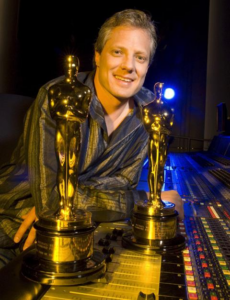
You’ve worked on a number of Lord and Miller projects over the years. How quickly did you sign onto working on The Afterparty?
Michael Semanick: Pretty quick. As soon as Chris called me and if I was interested, I said, Yeah, I’m interested in anything you guys do. Whether it works out schedule wise and financially, that’s two different things. But I’ll work with them any time. They are so wonderful to work with and being in Hollywood, they are two of the rarest people I think I know in the business, as far as how they approach things, their compassion, and they’re just great human beings to be around. They’re encouraging. They have demands, but it’s not unreasonable. They’re wonderful so I would jump on the chance, anytime.
How has the shorthand in the relationship improved over the years?
Michael Semanick: Since the first time, it’s improved dramatically. I mean, you start to get to know some people. You get to know them really well, their likes, their dislikes, what are the films they love. You’re just talking back and forth, seeing how they lay out a movie, the dynamics of their films, or just their storytelling. I learned that really quickly. I understand the musical tastes and the quirky sound effects thing. The shorthand just keeps getting better over time. That’s just building relationships and knowing what your directors want, and what direction they’re going in. If there’s a time when I can’t figure it out, I can easily turn to them. They’re very clear about No, no, I want it to be more like this, or I want it to feel more like that. The shorthand has gotten really easy and fun.
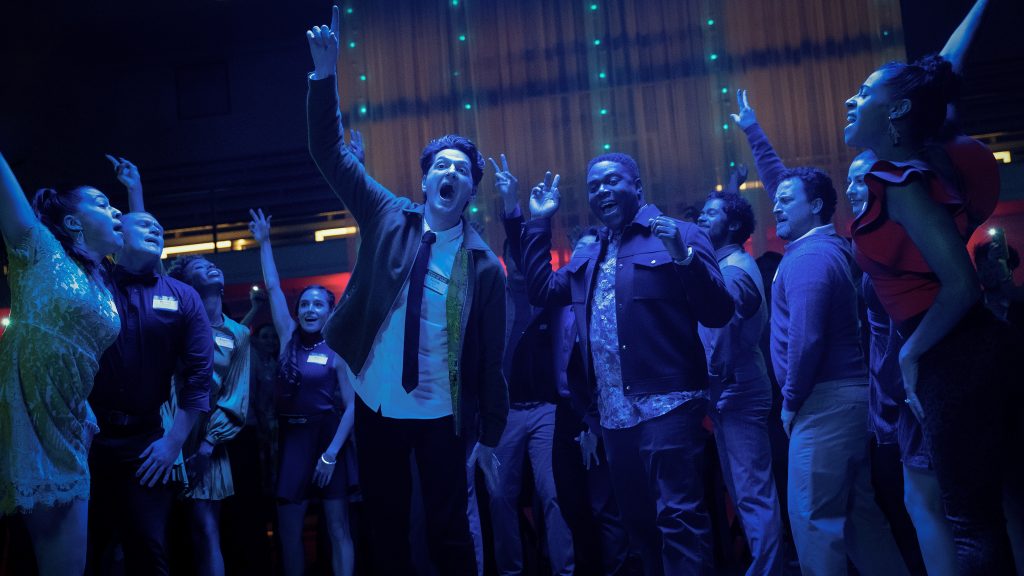
Did you have a favorite episode during the first season that you loved mixing?
Michael Semanick: I did like the Yasper one because of its musical stuff. Brett was fun. Actually, I did like Zoë as—I liked a few of them because they’re so different. Each one was so different. That’s what was so fun about it is, each week, it was different. We could approach it—similar themes, but you could approach it completely different because it’s from somebody else’s perspective, which opens up the whole thing. That made it really fun. Chris is very open to, yeah, we can change this or this is why we need to do that. And, yeah, kind of run with it. He’s just kind of like, run with it. Show me what you got. But again, when you have that shorthand of already knowing what he wants, he can just say, oh, yeah, try that and go run with it, take it and see. I’ve never looked at it that way but maybe that’ll be the best way. He’s very, very open to ideas, especially with the—like I said, the shorthand working together, they’re more open to ideas and trusting. I think that it. It’s a big trust factor.
Pandemic aside, what was the biggest challenge about working on the series?
Michael Semanick: The challenge was we didn’t have a lot of time to mix. It was getting through it, making sure it was clear, and that Apple was going to be happy with the sonic quality of it. I knew working with Chris and E Squared (Erik Aadahl and Ethan Van der Rhyn), I knew their tracks were good. It was a matter of just, let’s get the balances, right. Let’s get it past everyone to be. Fortunately for me, Apple does have a lot of notes and they do ring in. They listened to it and they barely had any notes. Chris was like, I can’t believe it. They’re just like, it sounds great to them. They had one note in one episode. Some episodes, they had zero notes. They said the mix is great. They’ve been notorious for giving lots of notes because it’s their product and they want it to sound good and they want it to represent. I think it’s great they go through that process of like yeah, we want quality. That was fun to see because Chris was a little worried, well, we’ll probably get a lot of notes and we don’t have a huge amount of time to mix. You’ve just got to be prepped really E Squared did a great job of prepping it.
How did the pandemic impact the usual mixing process?
Michael Semanick: We had to test—we were testing once a week, not daily—because we were on-again, off-again. We would only mix for a few days and then be off and they had to come in and test. It was a limited number of people in the mix. As long ass we had Chris around, just us and Erik Aadahl, we seemed to work at pretty smooth during the pandemic. Keeping everybody safe and when you’re in a mix anyway, you’re really not close to anyone. The rooms are somewhat big and the other mixers are pretty far. They’re usually sitting in the back by 10 or more feet away so it wasn’t too bad, actually. I did The Mitchells vs. The Machines with them right in the pandemic so we learned a lot from that and that was a bit of a challenge. But as time has progressed and people were vaccinated and or had already had COVID and recovered and had antibodies, people felt safe, but we took the necessary precautions. It wasn’t too bad. I would say with the pandemic, it wasn’t that bad.
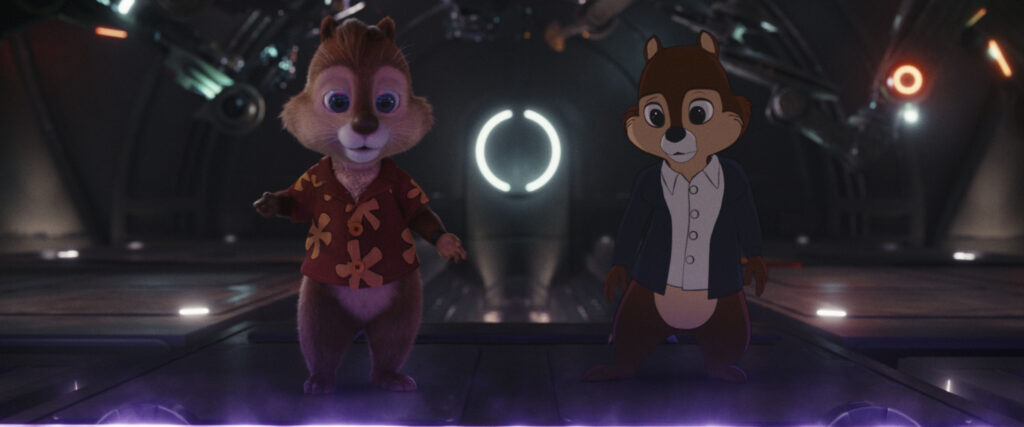
I have to say that I had a lot of fun watching Chip ’n Dale: Rescue Rangers this summer.
Michael Semanick: Oh, yeah. That’s a fun one!
I wish I could have seen it on the big screen!
Michael Semanick: I know. Akiva’s great. When I first got on, I was like, Okay, what’s this gonna be? And then I watched it and went, Oh, my G-d, this is actually really good. People are gonna miss this one, unfortunately, because they’re just gonna think it’s Chip ’n Dale and Akiva did a great job on that. Akiva knows Chris and Phil—it’s kind of almost similar camps of each other. But yeah, Rescue Rangers is surprisingly—you don’t think of it going into it. I said that’s the hardest sell. So people are just gonna, ehh, for the kids, and it’s actually really good. I enjoyed that movie. Like you said, I wish it was on the big screen. I totally wish it was.
I was watching the screener at home. Paul Rudd shows up and it’s like, who can I talk to about this?!?
Michael Semanick: (Laughs) Yeah, it’s a lot of fun. Akiva knows a lot of people and a lot of people wanted to be a part of it and then you’ve got Post Malone redoing the song at the end. It’s a lot of fun. I think it touches home to a lot of people. I didn’t realize how much people have good childhood memories of that. The way they wrote the story and rebooted it, I thought was really pretty genius and really fun. I’m glad you liked it because a lot of people have said, I haven’t seen that. I hear really good things. And then they watch it and I get a call going, Holy crap, that was really good. It was like, I didn’t expect it. My kid’s seen it three times and a lot of the stuff goes right over their head, but it’s like, it’s really fun.
How did you first get an interest in sound mixing?
Michael Semanick: I actually went to Berklee College of Music and studied music. They had a program there called Music Production and Engineering, which was in the recording studio and learning how to record and signal flow and capturing the moment with musicians and building songs or whatever it could be. It could be string quartets, sound for picture, themes for a TV show. I learned all about that.
When I left Berklee, I came back to the west coast and got a job at a recording studio. It took me a while. I had to beat the pavement for a long time. But I finally got hired and then I just never stopped working in studios. When I was out at Fantasy Studios in Berkeley, California at the time, they would do things, not just albums, string quartets, and spoken word. I mean, you record everything from commercials to—so I started recording. They would come in and record ADR and Foley for motion pictures. I started doing that as a recording engineer and several people in the film industry were like, Wow, you’re really good at this. Have you ever thought of film mixing? I never thought of it. I was mixing albums. I was recording Foley, ADR. I was just being a recording engineer. I got turned on to film mixing, checked it out, and then I just never stopped. I fell in love with it. I had great teachers. It took a while to get the opportunities but I had people behind me and pushing for me. It’s one of those catch-22s—directors come in and they want to know who’s mixing their $100 million dollar movie or $70 million film and then they look at my credits. I had none and they were like, well, I want someone who’s got credits, but you can’t get credits until—you know what I mean. It was a really tough to build credits, then producers and people were like, oh, yeah, he’s got credits, we’ll use him. It took a lot of years of building that.
I was fortunate enough to work with up and coming directors who took a chance like Paul Thomas Anderson, David Fincher. They all became big directors, and they continued to use me. One of my biggest breaks was from David Lynch wanted to work with me, because I worked with him on a Michael Jackson thing. When he did Twin Peaks, he was like, I want that kid, Michael. I want him on there. That was a big thing. They had other people lined up for that and David wanted me on that. I had a great time on that mix and we had a lot of fun. It was one of the big stepping stones for me to build a credit list in films because it really is hard. I mean, people want to trust you and it’s hard to gain that trust until you work with them. But they want people with experience. I’m just lucky several people took some chances on me.
You mentioned having great teachers. Were there any mentors in particular while you were coming up in the business?
Michael Semanick: Yeah, there were. I worked with David Parker, who’s a mixer, and Mark Berger and Leslie Shatz. Those were three of the main people that really helped me along, showed me how to do things and how not to do things. They were pretty big. Terry Porter was another one who worked at Disney for many years and still does. I think he’s around. Scott Millan. As I got into the business, I started meeting more, and some of them took me under their wings, and just like, hey, I’ll help you get on this show, help you get on that show. As I built that resume, it was great to watch.
I’m still a student of film sound and I think you’re always a student of it. You’re just always trying to go, Well, what can I do different? Why is the director doing this in a scene? Why is the camera tracking and why are they doing a high shot? What is it that the sound can do or the music can help pull the audience in more or just let the audience breathe? I did have mentors and learning how to and just mixing and seeing directors.
Paul Thomas Anderson was really influential to me, not only because I loved his movies and I got started early with him but he really pushed me in the end. David Fincher was always pushing sound, pushing sound like let’s try pulling it all out. Paul was very particular and it really taught me how to do transitions and how to make scenes meld into one another. I think he kind of plans it out in his head like Spielberg does. They plan these shots out, or they plan the scenes out. And then it’s like, well, how do I transition from here to there? Maybe sound can help me. Sometimes when I would get lost trying to figure out how to play a scene into another scene, I could always turn to the director, and I knew they could take me by the hand and guide me through it. At a certain point, I could just figure it out. I knew what they wanted. Like Tim Burton, I know what he wants. I know how he wants to transition. I seem to not somehow figure it out very quickly. Again, it’s working with someone, understanding their tones and textures and what they want out of the film and how they want the audience to feel or go. Usually, it’s right there up on the big screen. They’ve shot it that way. It’s edited that way. It’s just like, how can I support it? How can I help it? I answered the question and then some.
What do you enjoy the most about the mixing process?
Michael Semanick: I really enjoy the collaboration of working with others and creating a soundtrack—sound effects, dialogue, and music—that audience members goes to and pays attention to it but doesn’t. They’re just watching a story and they laugh and they cry and they get wrapped up in it. I think that is the biggest joy for me. It’s working with great people and having a good time mixing and building—taking this thing, this story; it’s a campfire story, essentially. That’s what we’re telling, our campfire stories. We’re taking it and putting sound and visual to it and telling people it. That’s fun to me to help put it all together and let the director’s vision come out. That’s what I wanted and that’s what I want the public to see. Whether they love it or hate it, this is what I wanted them to see or hear.
You say the favorite part is collaborating and working with people and creating a product that the audience can enjoy or be entertained with. Sometimes, it’s just about being entertained. Sometimes, it’s about making a statement or it’s educational for kids or touching feelings. Sometimes, it’s just entertainment, just comedy. It’s fun. It’s just like, I just want to go and be entertained. Depending on the film, it is fun to work on a variety of stuff like that and then the see the audience react.
Skywalker Sound is one of the premier sound companies in the industry, if not the world, with numerous Oscar wins and nominations. What advice would you offer to someone that wants to work there someday?
Michael Semanick: They do have very limited internships so I would say schooling, learning Pro Tools. It’s tough to get through there. Even if you can’t get in the door the first time, you may end up working in Hollywood. There are a lot of people who come later. They get a lot of experience down in LA, New York, or London and eventually, their name gets around. Stay in touch with the person who runs Skywalker. Find out who the general manager is, who’s hiring, and just touch base, hey, I’m a student or I’ve been working over here at this studio for the last three years, I’m looking to relocate or we’d love to work at Skywalker Sound. It’s my dream to, here’s my credentials, here’s what I know, here’s what I’m learning, if you ever have an opening. I say just be kind of persistent. It’s a tough one to be persistent, but not be a pest. You have to find a fine line of being persistent, following your heart, following your goals. If you can’t get in at Skywalker, maybe someday you do.
I didn’t get in at Skywalker at the beginning. I was mixing all over the place. I was mixing at Salvant’s (sp?) and I was mixing up at Coppola’s place. I was coming down to LA, mixing at Warner Brothers and Warner Hollywood and then eventually, Skywalker came calling were like, hey, we need a mixer, would you be interested in coming here? You live in the area. I was like, Yeah, sure. I knew people. I had worked with people from Skywalker. I talked to the management and eventually, as I got my name out there and more and more people were requesting me. Directors were post—sound supervisors were saying, hey, I’d really like to use this guy and then those teams go okay, let’s go find him and let’s see what he’s up to and see if he’s interested in doing as much work here as he can. Sometimes, you get on right away and some people are lucky like that. Some people can get out of school, they get the internship and then they get hired there. It’s pretty rare but it does happen. Me? I didn’t get on right away. They didn’t call for quite a while but eventually, I just kind of made my way and I ended up just migrating over that way.
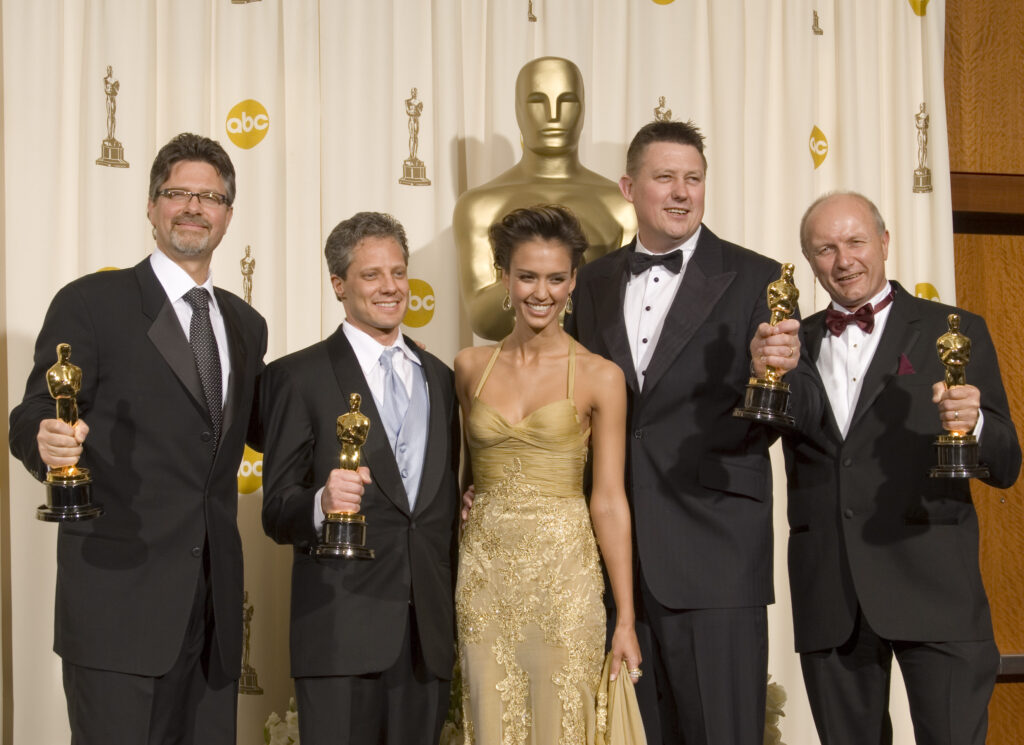
With previously winning two Oscars for sound mixing, how do you manage to stay grounded?
Michael Semanick: Family. I have three kids. I don’t want it to get to me. I always like to give credit to the teams—yes, I won two Oscars—but if it wasn’t for the people behind me, the editor, sound editors, and people getting sounds, I wouldn’t be there. I try to just be humble about the whole thing. Is it great to be included in the Academy’s party and celebration of it of filmmaking? Yes, it is. I think it’s important the sound community is part of it because I think it’s a big part of moviemaking. I just tried to stay grounded. I just don’t let it get to me. I’m just a kid from a small town and you get lucky sometimes. It feels like you get lucky but I did put myself in places constantly. I can tell you the times I’ve been turned down versus the times I’ve been hired. I just try to keep it real.
The pandemic was hard. I like to go out and see live music and just hang out with people and meet different people not in the film industry. Meet people, firefighters, etc. It’s great to just go and just meet people sometimes. Sometimes, that’s really humbling to me when you see everyday life.
You can get caught up in your career and you get caught up in trying to do things but I always tried to bring it back to family or my kids or like, let’s just put all that yeah, yeah, I’ve achieved some things. But in the end, it’s about being a great human and respecting other people. I achieved some things; it doesn’t make me an amazing person. What makes you amazing person is how you treat fellow human beings and how you interact with them. I try not to let that head grow because it’s easy to do and I’ve seen it happen. I’m not going to try really hard to just—I don’t need that. I don’t want that in my life. I don’t need that stress of trying to be better or thinking I’m better. I’m just as good as anybody else and they can be just as good as me. I just want to focus on making a great product. Maybe that’s how I stay grounded about it. I don’t know.
I love human beings and I think people’s intentions are always good. I want to know about other people’s lives and it doesn’t matter what I did, let’s get real. That’s how I sort of do it. I don’t actually know. I want to make a decent living. I want to support people and I’m never better than the next person. I’m just different. I approach it differently and they’re just as good as me. If people recognize me over someone else, that’s great but it’s not the end all and save all, it’s the icing on the cake.
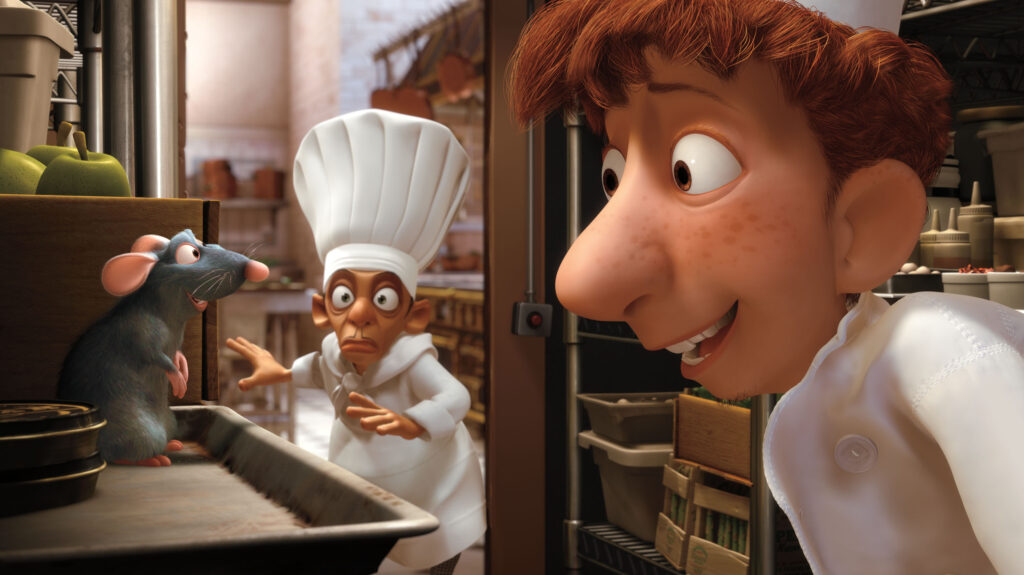
I will be watching Ratatouille for the upcoming 15th anniversary on June 29.
Michael Semanick: Oh, my word. I was just at a restaurant last night over here. There was a couple sitting at the bar. I was sitting at the bar. The waitress came over and she served them something and she asked them, have you guys seen Ratatouille? This is like, blah, blah, blah, blah. The girl was like, Yeah, I saw it. It’s so great! I haven’t seen in years. The guy was like, oh, yeah, I remember that. I heard their conversation. She left and she came back over to take my order. I looked at her and I said, I demand to know who made the ratatouille. She was like, oh my G-d, she goes, you heard me talking. I said, Yeah, I know a little bit about Ratatouille. I love that movie. I didn’t tell her I worked on it or anything. It was just one of those things—when you hear people talk about Ratatouille, Brad Bird did such a great job on that. I had so much fun mixing that with Randy Thom and it’s such a good movie. How Brad Bird took rats and put them in a kitchen and made it endearing and not gross is phenomenal. It’s so fun and it teaches you so much about food and its pairings. What anniversary?
Fifteenth!
Michael Semanick: It’s that long ago, huh? Where are they showing it?
I’ve got Disney+.
Michael Semanick: Oh, there you go.
I’ll also be rewatching The Last Jedi at some point.
Michael Semanick: Oh, great.
After watching Obi-Wan Kenobi, I rewatched the original trilogy on Wednesday night.
Michael Semanick: Oh, wow. I love that original trilogy.
I’m not doing what I do without the original trilogy and Jurassic Park.
Michael Semanick: Right. I agree. You’re absolutely right. I love that you love film and storytelling. It’s so great because it’s people carrying the torch. You know what I mean? We love being told stories and that’s one of the things I love about movies. I love going to the movies and just being told a story. Forget about everything else, I want to see other people’s lives or other things and like you said, just be entertained. I haven’t seen Top Gun: Maverick yet and I’m dying to see it. They’re going to show it and I’m gonna go because I get some time off. Because my friends tell me just go! It’s just great entertainment. It’s just really fun and it doesn’t have any kind of an agenda. It’s just a fun movie to be entertained at so I’m looking forward to going to see that because I haven’t gotten a chance to yet. I will, I’ll get there. Well, thank you for watching my films or the sound of them. They’re not my films, they are actually the director’s films and so it’s theirs but thank you for listening.
No problem. The Social Network and The Last Jedi are some of my favorite films of all time.
Michael Semanick: The Social Network’s really wonderful. I mean, it’s a Fincher. I almost think that might be his best film ever. I can hem and haw. Fight Club’s great, too. I can go round and round probably for hours and never settle on one but I love The Social Network. I love just the style. I love the dialogue. I love the way how he edited it. I love his attention to detail and the sound in the film was phenomenal thanks to Ren Klyce collecting all those sounds and doing that. It’s a good one. I’ve gotta watch that again someday.
The Afterparty is streaming exclusively on Apple TV+. Chip ‘n Dale Rescue Rangers is streaming exclusively on Disney+.
Please subscribe to Solzy at the Movies on Substack.

